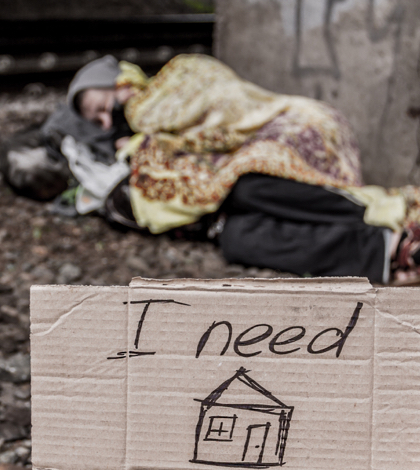Formerly in charge of Upland’s efforts to solve its homeless issues, Gavin, 46, is now Fontana’s homeless coordinator. Gavin, who gave up his computer software business to do what he’s doing now, recently had his contract renewed for one year. He spoke with IE Business Daily recently for the second time in three years about how he landed in Fontana, why homelessness is so difficult to fight and why he thinks the problem might be getting worse.
Q: Two and a half years ago, when you took the position in Upland, you said you wanted to “give something back to the community.” Do you think you’ve succeeded?
A: Yes, absolutely. We haven’t solved the problem, but we’ve gotten a lot of people off the street. We’ve gotten the word out about how serious the problem homelessness is, not only in the Inland Empire but everywhere. I think we’ve done a good job convincing the cities how serious the problem homelessness is.
Q: Besides your work, how have you done that?
A: In a couple of ways. I’ve done a lot of outreach, and a lot of speaking engagements, to church groups, police departments, and high schools. I spoke recently at Damien High School in La Verne. They wanted to find out what they could do to help homeless people. I was on the San Bernardino County Inter-Council on Homelessness.
Q: How did you end up in Fontana?
A: When my contract in Upland ran out at the end of 2018, some people in Fontana called me and said they wanted me to do the same thing there that I’d done in Upland. I was very moved when they suggested that, so I said yes. I started in April of last year.
Q: So what are you doing in that city?
A: Mainly we’re partnering with the police, and we go around and identify homeless people and where they live, which is difficult to do. The homeless tend to move around. We try to identify the [homeless] people who generate the most calls to the police.
Q: Your personal position is that police departments should not be responsible for solving a city’s housing problem.
A: That’s correct. They have other things to do. They can consult with us, and help us define the homeless population, but that’s about it. I don’t want to sound anti-police, because I’m not. I think this talk about defunding police departments is irrational. But solving homelessness is not their job.
Q: Is the Inland region’s homeless problem better or worse than it was two and a half years ago when we first spoke to you? Have we made any progress?
A: I’m afraid it’s getting worse. Because of COVID-19, I think we’re heading into a five to 10-year economic downturn, and that could hurt funding. I think it might take that long to recover from this. And we still have to agree on how to solve the problem. There are still people who believe that the best way to deal with homeless people is to arrest them and put them in handcuffs, but that’s not the case.
Q: Are a lot of homeless people coming down with COVID-19?
A: No, not at all.
Q: What do you know now that you didn’t know two and a half years ago?
A: That getting a homeless person into a home – the “housing first” approach, as it’s called – is only part of the solution. A lot of these people have drug problems or alcohol problems. Those are real things. When I first started doing this, in Upland, I didn’t understand that a lot of homeless people have accepted this is their lifestyle that there’s no way they can get off the street.
Q: They get used to it?
A: Yes. They give up on themselves. They can actually get comfortable with not having a home, which is the one thing you don’t want to happen. If you can get one person off the street, that really helps. They can be role models, and inspire someone else to get off the street.
Q: Homelessness seems to be a problem everywhere. Why is it so difficult to get rid of?
A: Because it never slows down. Someone gets off the street but someone else is getting put on the street. Also, for a long time, they were looked at as something that needed to be gotten off the street, like a bag of trash. That’s not a good approach. First, you have to get them into housing, but you also have to have the other services: help them find a job, drug and/or alcohol rehabilitation, help them reconnect with their family.
Q: Is “housing first” becoming the accepted approach to treating homelessness? That used to be the last part of the process.
A: Yes, it is. And I think it’s been proven to work, as long as you include the service components I just mentioned. And your funding is good, which ours is.
Q: Do most homeless people eventually get off the street?
A: I would say so. A lot of them end up working out their problems, whatever they are, for themselves. When I first started working in Fontana, I put together a list of homeless people and the police told me they don’t see half of them anymore. That was encouraging.
Q: You gave up your computer software career to do what you’re doing now. It must be very rewarding work.
A: It is, but I try to be humble about it. I don’t want it to look like I’m the only person fighting this fight. There are a lot of people involved in this effort. And I am getting paid. I’m not St. Gavin yet.
 IE Business Daily Business news for the Inland Empire.
IE Business Daily Business news for the Inland Empire.


